Discover 20 hidden attractions, cool sights, and unusual things to do in Northampton (United Kingdom). Don't miss out on these must-see attractions: Althorp, Sixfields Stadium, and Delapré Abbey. Also, be sure to include All Saints' Church in your itinerary.
Below, you can find the list of the most amazing places you should visit in Northampton (England).
Table of Contents
Althorp

Althorp is a Grade I listed stately home and estate in the civil parish of Althorp, in West Northamptonshire, England of about 13,000 acres. By road it is about 6 miles northwest of the county town of Northampton and about 75 miles northwest of central London, situated between the villages of Great Brington and Harlestone. It has been held by the prominent aristocratic Spencer family for more than 500 years, and has been owned by Charles Spencer, 9th Earl Spencer since 1992. It was also the home of Lady Diana Spencer from her parents' divorce until her marriage to Charles, Prince of Wales.
Althorp is mentioned as a small hamlet in the Domesday Book as "Olletorp", and by 1377 it had become a village with a population of more than fifty people. By 1505 there were no longer any tenants living there, and in 1508, John Spencer purchased Althorp estate with the funds generated from his family's sheep-rearing business. Althorp became one of the prominent stately homes in England. The house dates to 1688, replacing an earlier house that was once visited by Charles I. The Spencer family amassed an extensive art collection and other valuable household items. During the 18th century, the house became a major cultural hub in England, and parties were regularly held, attracting many prominent members of Great Britain's ruling class. George John, 2nd Earl Spencer, who owned Althorp between 1783 and his death in 1834, developed one of the largest private libraries in Europe at the palace, which grew to over 100,000 books by the 1830s. After falling on hard times, John Spencer, 5th Earl Spencer, known as the Red Earl, in 1892 sold much of the collection to Enriqueta Rylands, who was building the University of Manchester Library. Many of Althorp's furnishings were sold off during the twentieth century, and between 1975 and 1992 alone approximately 20% of the contents were auctioned.
The house at Althorp was a "classically beautiful" red brick Tudor building, but its appearance was radically altered, starting in 1788, when the architect Henry Holland was commissioned to make extensive changes. Mathematical tiles were added to the exterior, encasing the brick, and four Corinthian pilasters were added to the front. The grand hall entrance to the house, Wootton Hall, was cited by Sir Nikolaus Pevsner as "the noblest Georgian room in the county". The Great Dining Room in the east wing extension of the house was added in 1877 to designs by John Macvicar Anderson, its walls hung with faded, red damask silk. Numerous fireplaces and furnishings were brought to Althorp from Spencer House in London during the Blitz for safekeeping and still remain. The Picture Gallery stretches for 115 feet (35 m) on the first floor of the west wing, and is one of the best remaining examples of the original Tudor oak woodwork and ambiance in the mansion. It has an extensive collection of portraits, including Anthony van Dyck's War and Peace, a John de Critz portrait of James I, a Mary Beale portrait of Charles II, and many others. Some £2 million was spent on redecorating the palace in the 1980s, during which time most of the religious paintings of Althorp were sold off.
In total, the grounds of Althorp estate contain 28 listed buildings and structures, including nine planting stones. The former falconry, now a Grade I listed building, was built in 1613. Gardener's House is listed as a Grade II* listed building in its own right, as are the Grade II listed West and East Lodges. The mustard-yellow Grade II listed Stable Block, designed by architect Roger Morris with a Palladian influence, was ordered by Charles, Fifth Earl of Sunderland in the early 1730s. The French landscape architect André Le Nôtre was commissioned to lay out the park and grounds in the 1660s, and further alterations were made during the late 18th century under Henry Holland. Following the death of Diana, Princess of Wales in 1997, she was interred on a small island in the middle of the ornamental Round Oval lake. A Doric-style temple with Diana's name inscribed on top, situated across from the lake, is a tourist attraction during July and August when the house and estate are open to the public, although the exhibition centre, situated in the old stable block, closed permanently in 2013.[1]
Sixfields Stadium
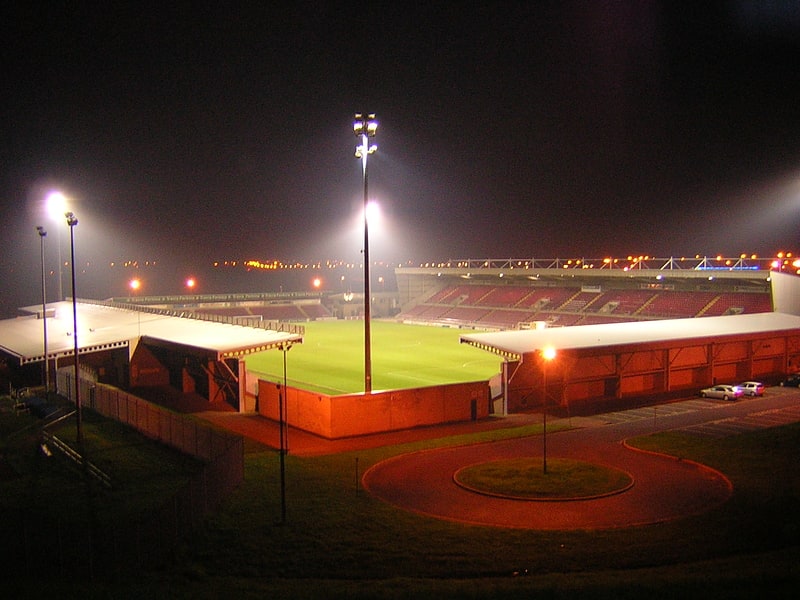
Stadium in Northampton, England. Sixfields Stadium is a 7,798-capacity all-seater sports stadium in the Sixfields area on the west side of Northampton, England. It has been the home ground of Northampton Town Football Club following their move from the County Ground in October 1994. It was also rented by Coventry City between July 2013 and August 2014. Aside from being a sports venue, Sixfields also houses conference facilities.[2]
Address: Upton Way, NN5 5QA Northampton
Delapré Abbey

Historical landmark. Delapré Abbey is an English neo-classical mansion in Northamptonshire.
The mansion and outbuildings incorporate remains of a former monastery, the Abbey of St Mary de la Pré (the suffix meaning "in or of the Meadow"), near the River Nene 1 mile (1.6 km) south south-east of Northampton. It was founded as a nunnery about the year 1145 devoted to the congregation of the major Abbey of Cluny in Burgundy, France.
The Abbey's expansive sloping grounds are a nationally protected Wars of the Roses battlefield, as a one-time site of the advance of the Yorkists during the Battle of Northampton (1460).[3]
Address: Delapre Abbey, NN4 8AW Northampton
All Saints' Church
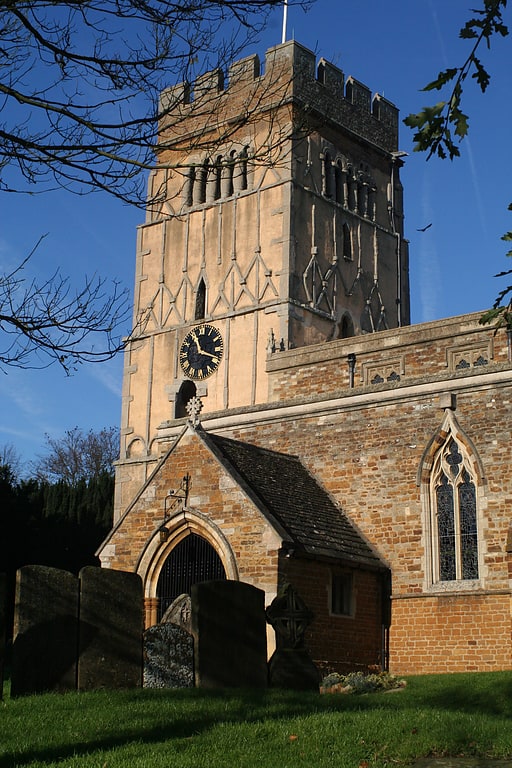
Church in Earls Barton, England. All Saints' Church, Earls Barton is a noted Anglo-Saxon Church of England parish church in Earls Barton, Northamptonshire. It is estimated that the building dates from the later tenth century, shortly after Danish raids on England.[4]
Address: 7 High St, NN6 0JG Northampton
Cottesbrooke Hall

Garden in England. Cottesbrooke Hall and the Cottesbrooke estate in Northamptonshire, England is a Grade I listed country house and estate.[5]
Address: Cottesbrooke Hall, NN6 8PF Northampton
All Saints' Church
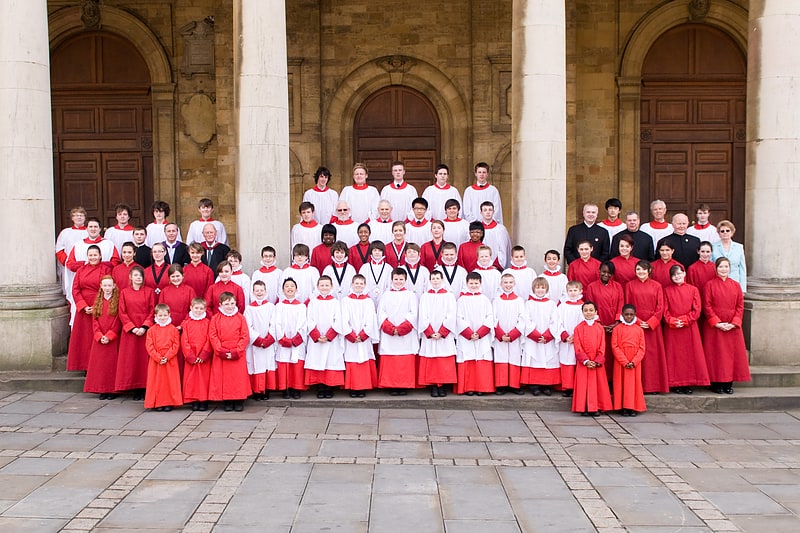
Church in Northampton, England. All Saints' Church, Northampton is a Church of England parish church in the centre of Northampton. The current church was largely built after a fire and was consecrated in 1680. It is a Grade I listed building.[6]
Address: George Row, NN1 1DF Northampton
Abington Park
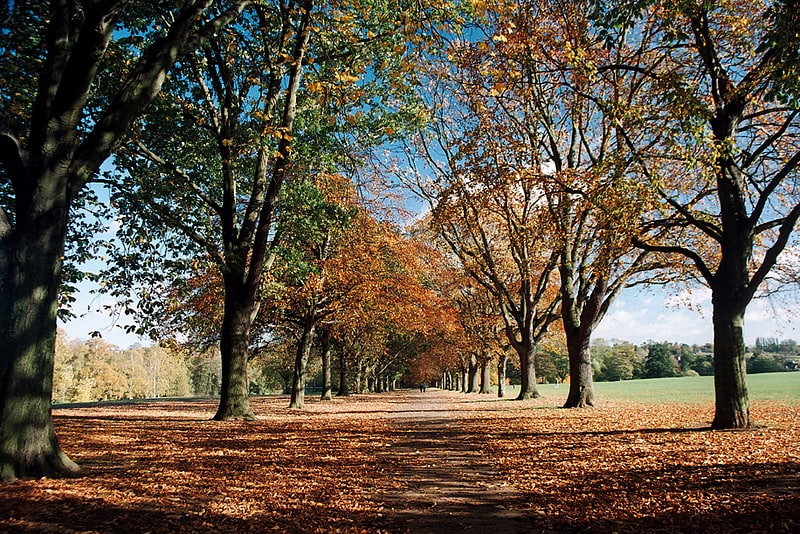
Museum in Northampton, England. Abington Park, in the Abington district of Northampton, has lakes, aviaries, and a museum, as well as trees and grassy open spaces.[7]
Address: Wellingborough Road, NN1 Northampton
Northampton Guildhall
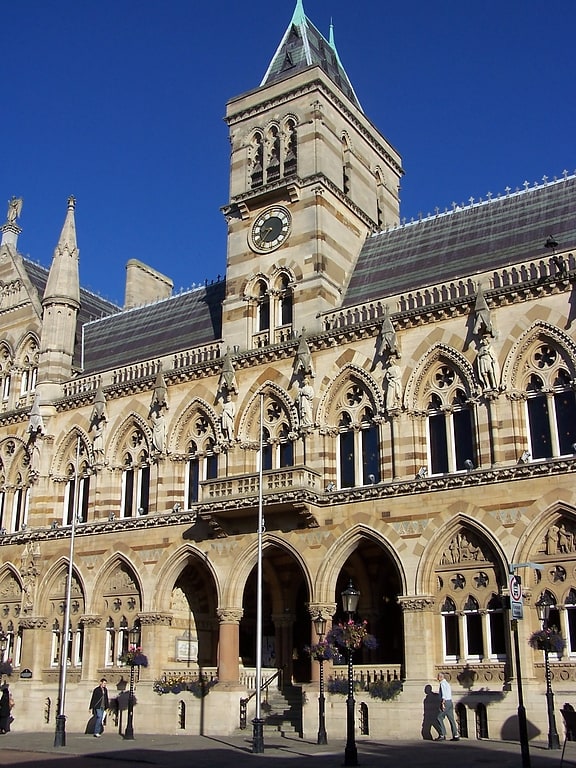
Event venue in Northampton, England. Northampton Guildhall is a municipal building in St Giles' Square in Northampton, England. It is a Grade II* listed building.[8]
Address: The Guildhall St. Giles Square, NN1 1DE Northampton
Northampton Marina
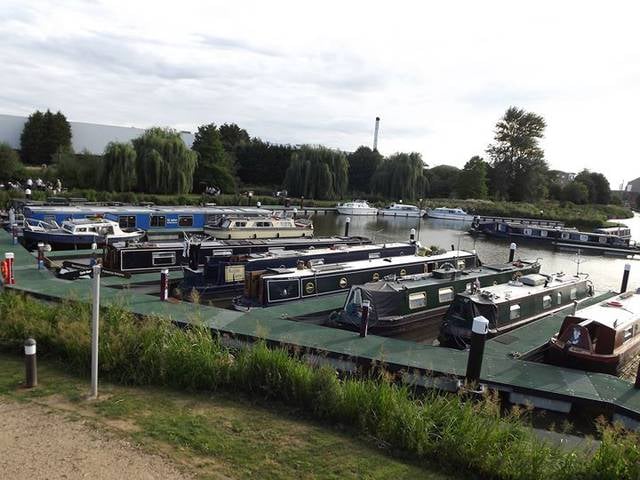
Sailing, Marina, Park
Address: Becketts Park, Northampton
78 Derngate
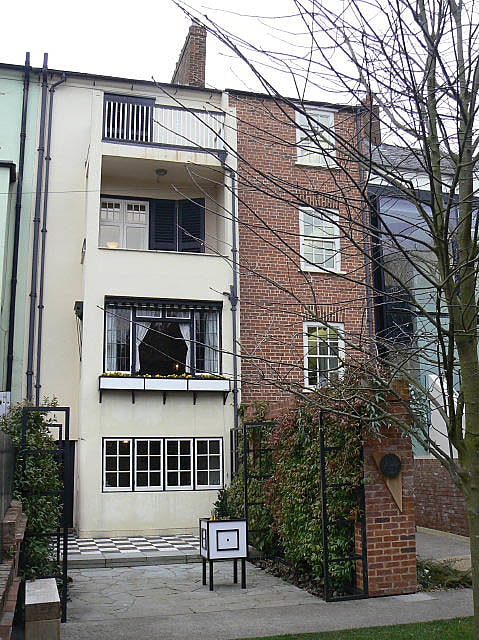
History museum in Northampton, England. 78 Derngate is a Grade II* listed Georgian house in the Cultural Quarter of Northampton, England, originally built in 1815. Its interior was extensively remodelled in 1916 and 1917 by the architect Charles Rennie Mackintosh for businessman Wenman Joseph Bassett-Lowke as his first marital home. Mackintosh's designs for the house are considered to be one of the first examples of the Art Deco style to be seen in Britain.
The rear elevation also features an extension with two elevated balconies which, in 1916, overlooked meadowland to the edge of Northampton. The design origins of this extension have been the subject of some scholarly debate and a myth of Mackintosh as a modernist pioneer in his late career has persisted. Recent research suggests that Bassett-Lowke and Alexander Ellis Anderson (a Northampton-based architect who supervised the remodelling) may also have had a hand in the design of this structure as well as Mackintosh.
In 1926 the Bassett-Lowkes moved to New Ways, a modernist house designed by Peter Behrens close to Abington Park; this house is also Grade II* listed.
Between 1964 and 1993 the building was used by Northampton High School for girls, initially as offices but later as classrooms. In 2002 work started to restore the house to Mackintosh's original design. This work was under the direction of architects John McAslan + Partners and involved a team of specialist contractors for restoration, or replication of, the original features of the Mackintosh period scheme.
After eighteen months of restoration, the house was opened to the public in late 2003. Small group guided tours or self-guided visits are available and provide an insight into this Mackintosh-designed house in England.
A supporting museum adjoins 78 Derngate and is housed in number 80. In 2003, the Discovery Channel aired a documentary series hosted by Eric Knowles titled The House That Mackintosh Built. The series followed aspects of the property restoration as it was in progress. In May 2007 a new visitors centre at 82 Derngate was opened to provide further facilities and exhibitions for visitors. This building, also restored by John McAslan + Partners, houses a restaurant, art galleries, meeting rooms, shop, visitor reception and administration offices. A regular programme of exhibitions and events is offered and an active 'Friends of 78 Derngate' group continues to raise funds for ongoing development of the project. On 3 October 2013, Prince Richard, Duke of Gloucester, visited 78 Derngate to commemorate the 10th anniversary of its opening to the public.
On 21 March 2017 a commemoration of the 100th anniversary of the marriage of W. J. Bassett-Lowke and Florence Jane Jones was held at 78 Derngate. A centenary exhibition, "Charles Rennie Mackintosh & The Great War" ran from 1 February – 29 April 2017. This comprised exhibits from the late career of Mackintosh and examined the wider context for his work on 78 Derngate against the background of the First World War. The exhibition was the largest display of Mackintosh design in England. A series of related events during the exhibition run featured experts giving public talks and workshops on related themes.
Artist and television presenter Lachlan Goudie featured 78 Derngate in his BBC documentary, Charles Rennie Mackintosh: Glasgow's Neglected Genius. This was produced to mark the 150th anniversary of Mackintosh's birth and was first broadcast on BBC Two Scotland on 5 June 2018. Goudie assessed the work on 78 Derngate as "he dazzling work of an artist willing to risk losing control", with the interior decor being presented as a bold 'comeback attempt' by Mackintosh which was to prove to be in vain against the background of the First World War.[9]
Address: 78 Derngate, 82 Derngate, NN1 1UH Northampton
The Holy Sepulchre
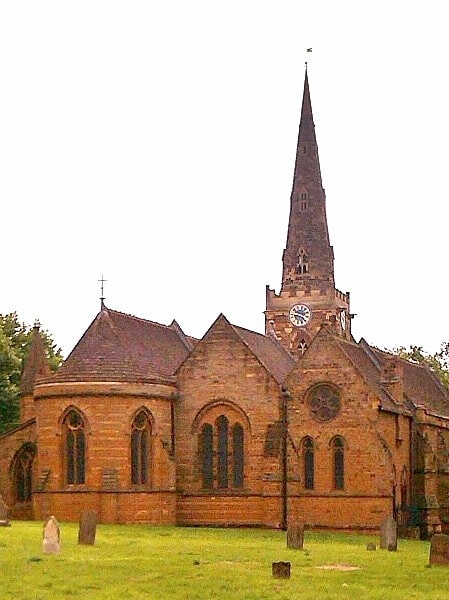
Church in Northampton, England. The Holy Sepulchre is a Norman round church in Sheep Street, Northampton, England. It is a Grade I listed building. Dating from circa 1100, it was possibly built by Simon de Senlis, Earl of Northampton.
There are four medieval round churches still in use in England; the others are: Holy Sepulchre, Cambridge; Temple Church, London; and St John the Baptist, Little Maplestead, Essex.
The Church of the Holy Sepulchre (Northampton) Restoration Trust was established in 1982 as a registered charity.[10]
Address: 79 Sheep St, NN1 3NL Northampton
The Racecourse

Park in Northampton, England. The Racecourse is an open space park situated in the centre of Northampton. It is the sports park for Northampton with football, rugby, bowls, tennis, and more. The park has many paths connecting different areas and over 100 streetlights. It is surrounded by the Mounts, Kingsley and Semilong estates.
Due to the links of the Racecourse to Northampton's history, it remains one of the town's famous landmarks. The Racecourse did hold regular horse racing meetings. However, these ceased in 1904.[11]
Address: Kettering Road, NN1 4LG Northampton
Royal & Derngate
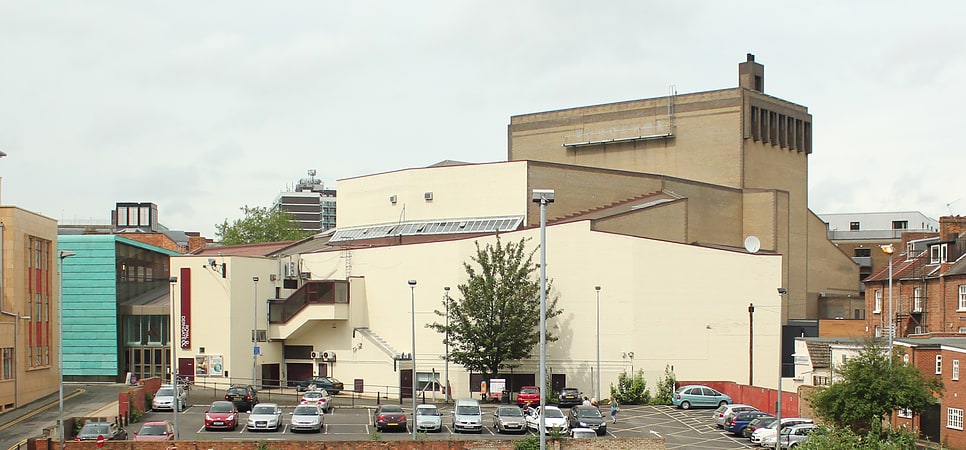
Royal & Derngate is a theatre complex in the Cultural Quarter of Northampton, England, consisting of the Royal Theatre and Derngate Theatre. The Royal was built by theatre architect Charles J. Phipps and opened in 1884. Ninety-nine years later in 1983, Derngate, designed by RHWL, was built to the rear of the Royal. Whilst the two theatres were physically linked, they did not combine organisations until a formal merger in 1999; they are run by the Northampton Theatres Trust. The Royal Theatre, established as a producing house, has a capacity of 450 seats and since 1976 has been designated a Grade II listed building; Derngate Theatre seats a maximum of 1,200 and is a multi-purpose space in which the auditorium can be configured for a variety of events including theatre, opera, live music, dance, fashion and sports. The Errol Flynn Filmhouse, an independent cinema built to the side of the complex, opened in 2013.
In 2005, both theatres closed for an 18-month £14.5m redevelopment. The theatres were merged into one complex, a creativity centre was constructed, and the two venues were totally refurbished. The complex reopened as Royal & Derngate in October 2006. From its reopening, Laurie Sansom was artistic director; under his tenure, The Stage hailed Royal & Derngate as The Regional Theatre of the Year (2010) in its inaugural Stage 100 Awards for "its artistic quality and connections it has with local audiences."
In 2013 James Dacre took over as artistic director. The Royal & Derngate was awarded the UK Theatre Management Award for Best Presentation of Touring Theatre for its Made in Northampton co-produced work in 2015 and the UK Theatre Award for Best Touring Production in 2016. It was shortlisted for the Regional Theatre of the Year Award again in 2016, and also nominated for Theatre of the Year in The Stage 2022 Awards.
In addition to staging and producing entertainment, Royal & Derngate also provide a programme of creative projects in its Underground space. This is the site of its Youth Theatre. It also presented chances for the local community to get involved in performing, writing and finding out more about what goes on behind the scenes.[12]
Address: Northampton, 1 Guildhall Road
Northampton Cathedral
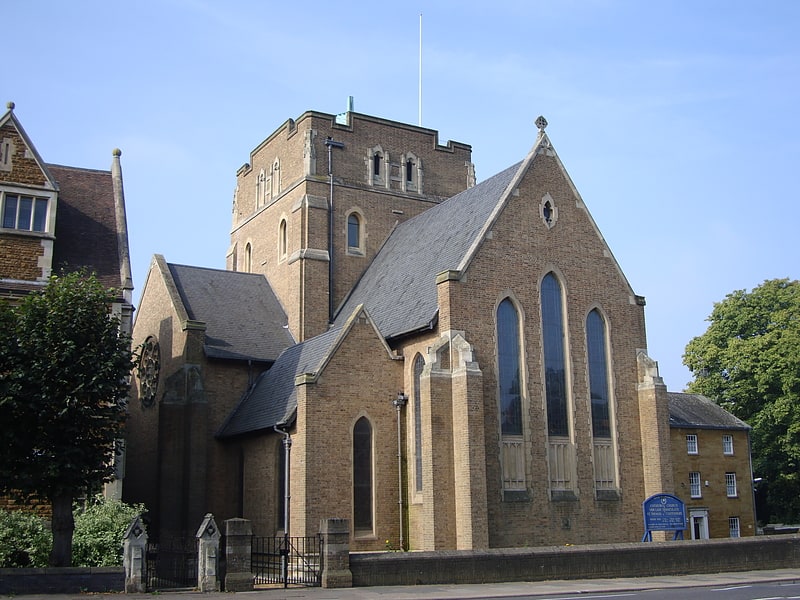
Victorian Catholic church for daily Mass. The Cathedral Church of St Mary and St Thomas is a Roman Catholic cathedral in Northampton, England. It is the seat of the Bishop of Northampton and mother church of the Diocese of Northampton which covers the counties of Northamptonshire, Bedfordshire, Buckinghamshire and part of Berkshire north of the River Thames. The cathedral is situated in the north of the town, along the Barrack Road.[13]
Northampton Museum and Art Gallery

Museum in Northampton, England. Northampton Museum and Art Gallery is a public museum in Northampton, England. The museum is owned and run by West Northamptonshire Council and houses one of the largest collection of shoes in the world, with over 15,000 pairs, which was designated by Arts Council England as being of local, national and international importance.
The town's museum was established in 1865, but moved to the current site in 1884, where it shared its space with the town's library. After the library moved in 1910, the museum took over the whole building. The museum was extended in 1935 and again in 1988. In 2012, the museum was refurbished for better access.
The museum closed between 2017 and 2021 for a major £6.7m expansion project. The new museum reopened in July 2021, more than a year later than planned due to the COVID-19 pandemic.[14]
Address: Guildhall Road, NN1 1DP Northampton
National Lift Tower
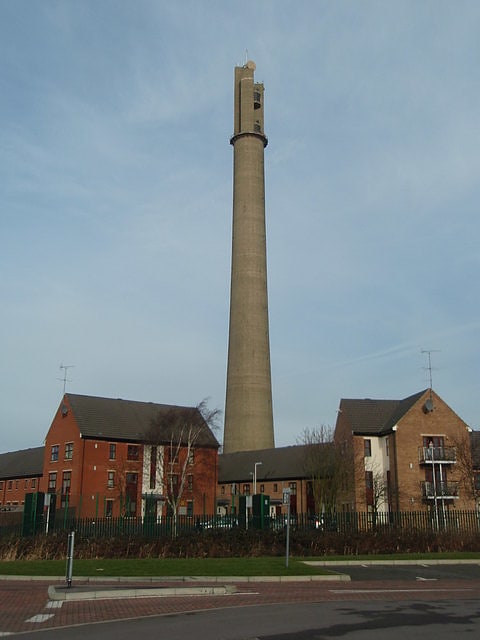
Tower in Northampton, England. The National Lift Tower is a lift-testing tower built by the Express Lift Company off the Weedon Road in Northampton, England. The structure was commissioned in 1978 with construction commencing in 1980, and was officially opened by Queen Elizabeth II on 12 November 1982. It has been a Grade II Listed Building since 1997.
The tower can be viewed from Arbury Hill, the highest point in Northamptonshire.[15]
Address: Northampton, Tower Square, Northampton NN5 5FH
Northamptonshire Ironstone Railway Trust
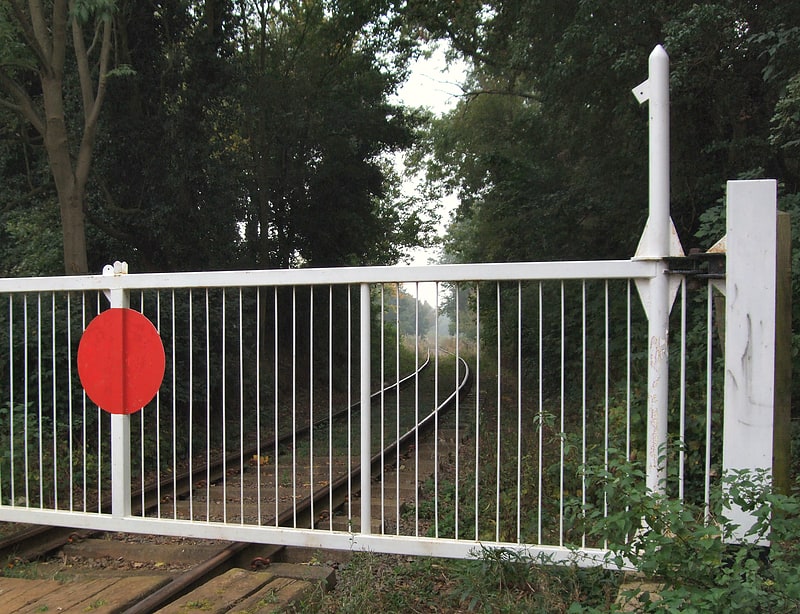
Heritage museum in Northampton, England. The Northamptonshire Ironstone Railway Trust operates a 1+1⁄2-mile long heritage railway line at Hunsbury Hill, south-west of Northampton. The line is mainly dedicated to freight working, featuring many sharp curves and steep gradients which were typical of the industrial railway, but rides are available in a variety of vehicles including a converted brake van.[16]
Address: Hunsbury Hill Country Park, Hunsbury Hill Rd, Northampton
Sol Central

Sol Northampton is a leisure complex in Northampton, England, with a multi-screen cinema, gym and beauty salon among other facilities. It was constructed in 2002 to replace the Barclaycard head office building previously sited there from the 1970s before relocating to the nearby Brackmills industrial estate.
In the late nineties after Barclaycard had moved to its new offices in Brackmills, plans were drawn up to redevelop the site. Northampton's then only main cinema was at Sixfields, constructed when the football club moved its home there. It was and is by and large difficult to get to from other areas in the town. The idea was to build a new leisure and retail space within the town centre similar to nearby places such as Milton Keynes which had recently opened the Xscape Centre.
When opened in 2002, it contained a hotel, night club/bar, gym and health club and a UCI (now Vue) 10-screen cinema complex seating over 2,500 with a 3-D facility.
In 2018 the "Central" was officially dropped from the name, and the owning company began looking for new tenants to fill vacant parts of the building.
In February 2020 the roof was damaged in high winds. This necessitated closure of two streets (Marefair and Horsemarket) bounding the site for 16 days, whilst the roof was repaired and adjudged to be safe.[17]
Northampton War Memorial
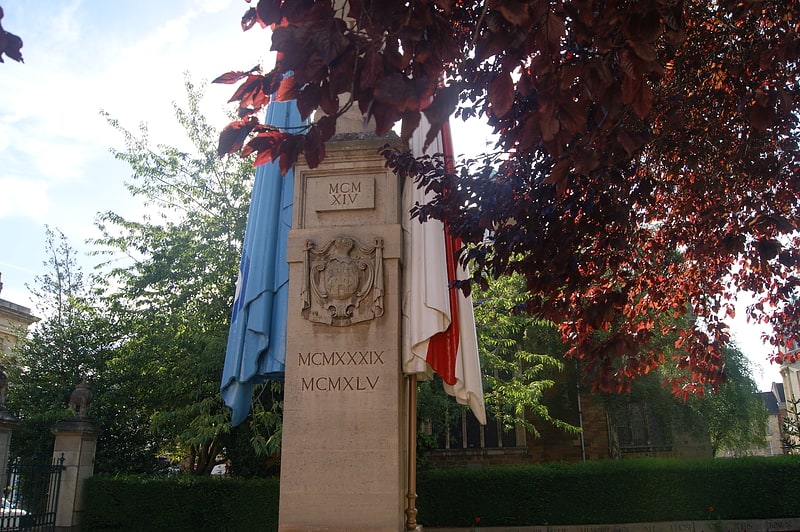
War memorial in Northampton, England. Northampton War Memorial, officially the Town and County War Memorial, is a First World War memorial on Wood Hill in the centre of Northampton, the county town of Northamptonshire, in central England. Designed by architect Sir Edwin Lutyens, it is a Stone of Remembrance flanked by twin obelisks draped with painted stone flags standing in a small garden in what was once part of the churchyard of All Saints' Church.
Discussion of a war memorial for Northampton began shortly after the armistice in 1918, and from July 1919 a temporary wooden cenotaph stood on Abington Street in the town centre. The Northamptonshire War Memorial Committee commissioned Lutyens to design a permanent memorial. The monument's design was completed and approved quickly, but its installation was delayed by six years until the site could be purchased from the Church of England, which required a faculty from the local diocese. The memorial was finally unveiled on 11 November 1926 after a service and a parade including local schoolchildren and civic leaders.
Northampton's memorial is one of the more elaborate town memorials in England. It uses three features characteristic of Lutyens's war memorials: a pair of obelisks, the Stone of Remembrance (which Lutyens designed for the Imperial War Graves Commission), and painted stone flags on the obelisks, which were rejected for his Cenotaph in London but feature on several of his other memorials. Today it is a Grade I listed building; it was upgraded from Grade II in 2015 when Lutyens's war memorials were declared a "national collection" and all were granted listed building status or had their listing renewed.[18]
Northampton Castle
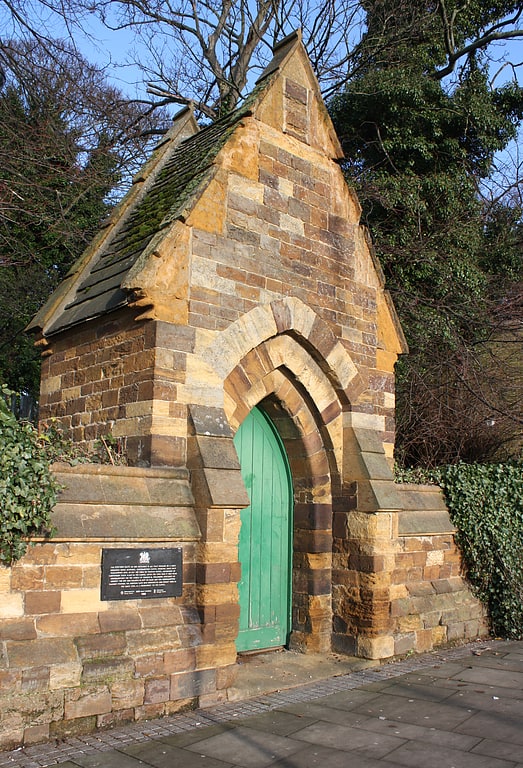
Northampton Castle at Northampton, was one of the most famous Norman castles in England. The castle site was outside the western city gate, and defended on three sides by deep trenches. A branch of the River Nene provided a natural barrier on the western side. The castle had extensive grounds and a large keep. The gates were surrounded by bulwarks made of earth, used to mount artillery. The castle was "obliterated" by the arrival of a railway branch of what is now the West Coast Main Line in the 19th century, the station of which was built on the castle site and the construction of the original Northampton Castle railway station. All that remains of the castle today is the Postern Gate, near Northampton Railway Station.[19]